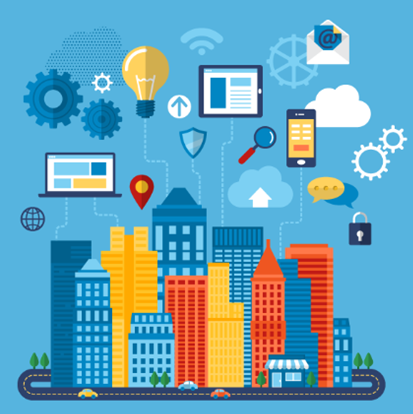
Today’s world is quickly becoming all about the Internet of Everything (IoE), tying together people, processes, data, and devices to make networked connections more valuable and relevant. By 2018, the number of internet-connected devices comprising the IoE is predicted to reach 23 billion, outnumbering the world’s population by about 2.5 to 1. Of these devices, 14 billion will be smartphones, PCs, tablets, wearables, connected TVs, and cars. The remaining 9 billion will spread across consumer, government, and enterprise sectors.
With this information at hand, clearly there are many benefits to staying plugged in. From heating buildings to securing airports to treating patients in hospitals, sensors — the backbone of the IoE — are increasingly becoming a huge part of our daily lives.
There are a variety of sensors responsible for revamping our world: biosensors, flow sensors, chemical sensors, and motion sensors.
Biosensing
From measuring body activity to critical health statistics, biosensing technologies are enabling advancements in healthcare and wellness. Typically, biosensors are used to determine the concentration of substances and other parameters of biological interest, even when they don’t directly utilize a biological system. The device itself is made up of a transducer and a biological element that could be an enzyme, an antibody, or a nucleic acid. In order to work, the bio-element interacts with the analyte being tested, and the biological response is converted into an electrical signal by the transducer.
Fortunately for consumers, there are a number of trending wearables used for medical or healthcare purposes. Products such as fitness trackers have emerged or are being developed in this category, covering numerous aspects of human physiology, such as monitoring heart rate and counting calories. Wearables typically provide tracking, feedback, and meaningful insights, and this data will only increase consumer lifetime value.
Flow-sensing
Most end equipment needs to accurately measure the flow of fluid, heat, and gases for metering or process control applications. Often these systems are remote and require monitoring powered by a battery source with low power and highly accurate sensing technology. Typically, a flow sensor is used in a flow meter or flow logger to record the flow of fluids.
Flow-sensing applications include respiratory devices and inhalers, oxygen concentrators, insufflators, and anesthetic devices. In the era of IoE, flow-sensing technologies will continue to develop to meet new consumer needs.
Chemical-sensing
Identification and sensing of chemicals, gas, fluid, and other materials play an important role across a number of end applications, including food and drug inspections and automotive emissions. Technology, specifically sensors, in this category will continue to evolve.
Gas sensors, for example, are extremely important, because they’re used to detect explosive atmospheres, oxygen deficiency, and toxic gases. Without gas detectors to detect threats, people could be exposed to gases that can cause harm or even death.
In the age of the IoE, chemical sensors will be able to share more data faster, promoting the safety of people and their surrounding environments.
Motion-sensing
Motion-sensing determines the location and lateral/linear, rotational, or axial motion of any moving object or component in a system. Automotive, motor control, and building automation are a few of the many applications for position- and motion-sensing.
The “Hall effect” is used to detect the presence of a magnetic field by an induced change in the electric field. Modern-day, silicon-based Hall-effect sensors are used for position, speed and acceleration detection, object recognition, index counting, and more in a range of industrial and automotive applications.
Due to rising applications across various industries, the motion sensors market will be worth $6.45 billion by 2020. Where there is a growing need for smaller-form-factor sensors with improved performance, MEMS-based sensors have proven to be the best solution.
Another factor driving the motion sensors market is the demand of accelerometers in consumer electronics. Motion sensors have been an essential component in consumer goods for years, but recent advancements have also made them cost- and energy-efficient. Sensors such as accelerometers, gyroscopes, and magnetometers are used in smartphones, tablets, and notebook computers, while also playing a big role in remote-controlled planes and aerial drones.
Roadmap to the future
From inside the home to across society as a whole, the IoE is a revolution set to change people’s lives for the better. Thanks to low-cost sensors, the IoE opens up new opportunities for creative app writers and consumers alike.
For more information on how to stay plugged in, check out Texas Instruments’ Sensing Solutions for greater insight into the future of sensor technology in the IoE.
Content Provided by AspenCore and Texas Instruments.
Advertisement
Learn more about Electronic Products MagazineTexas Instruments





